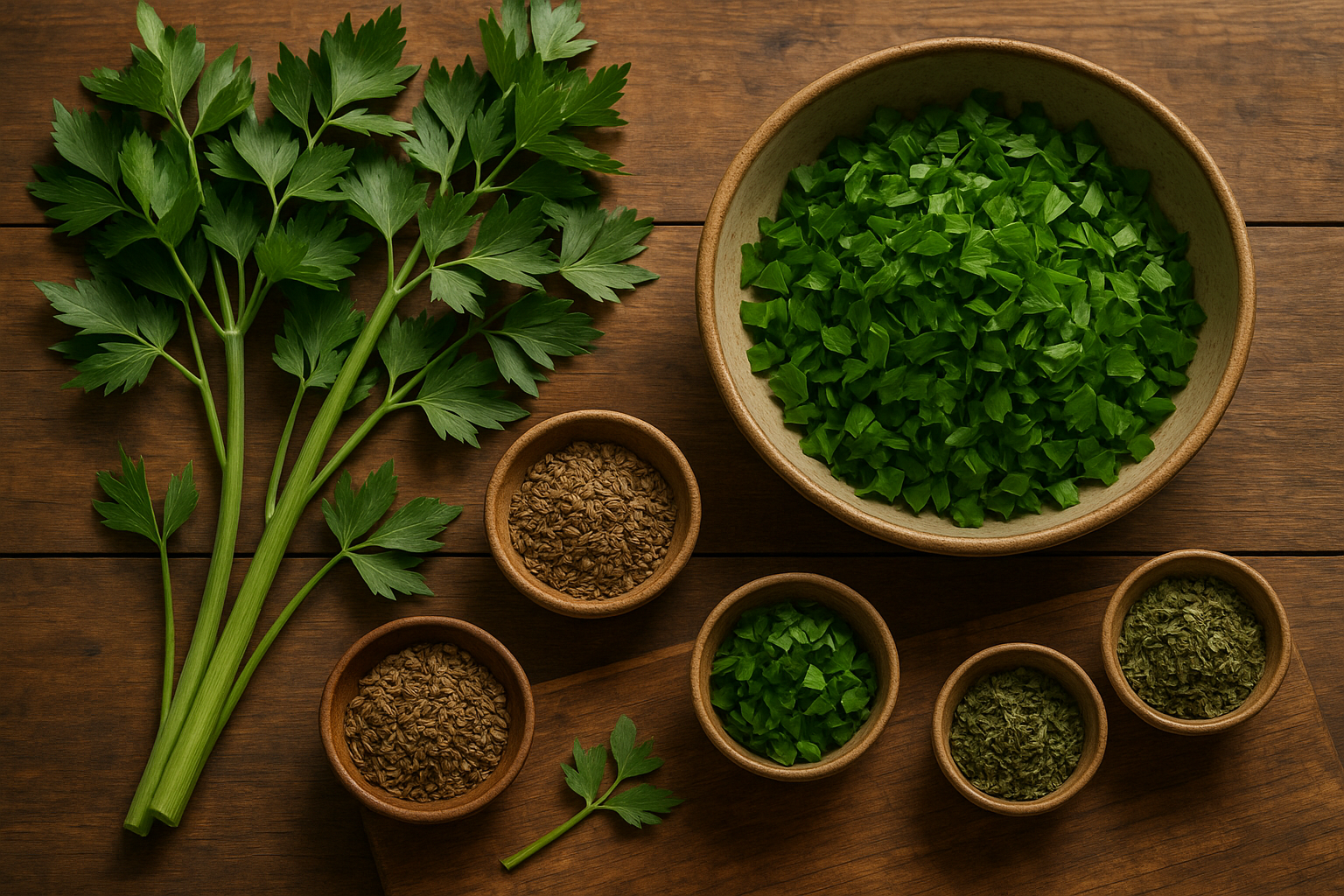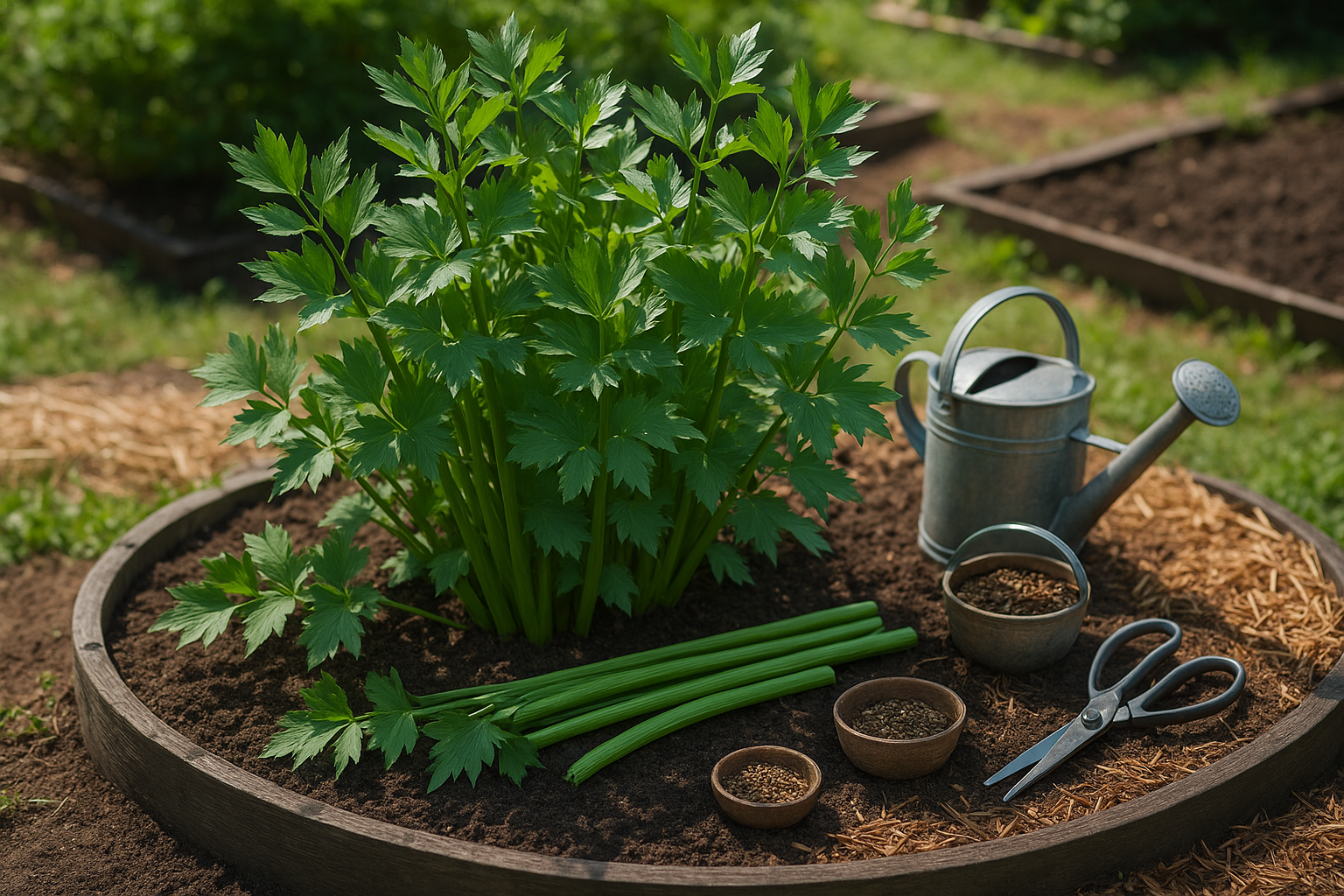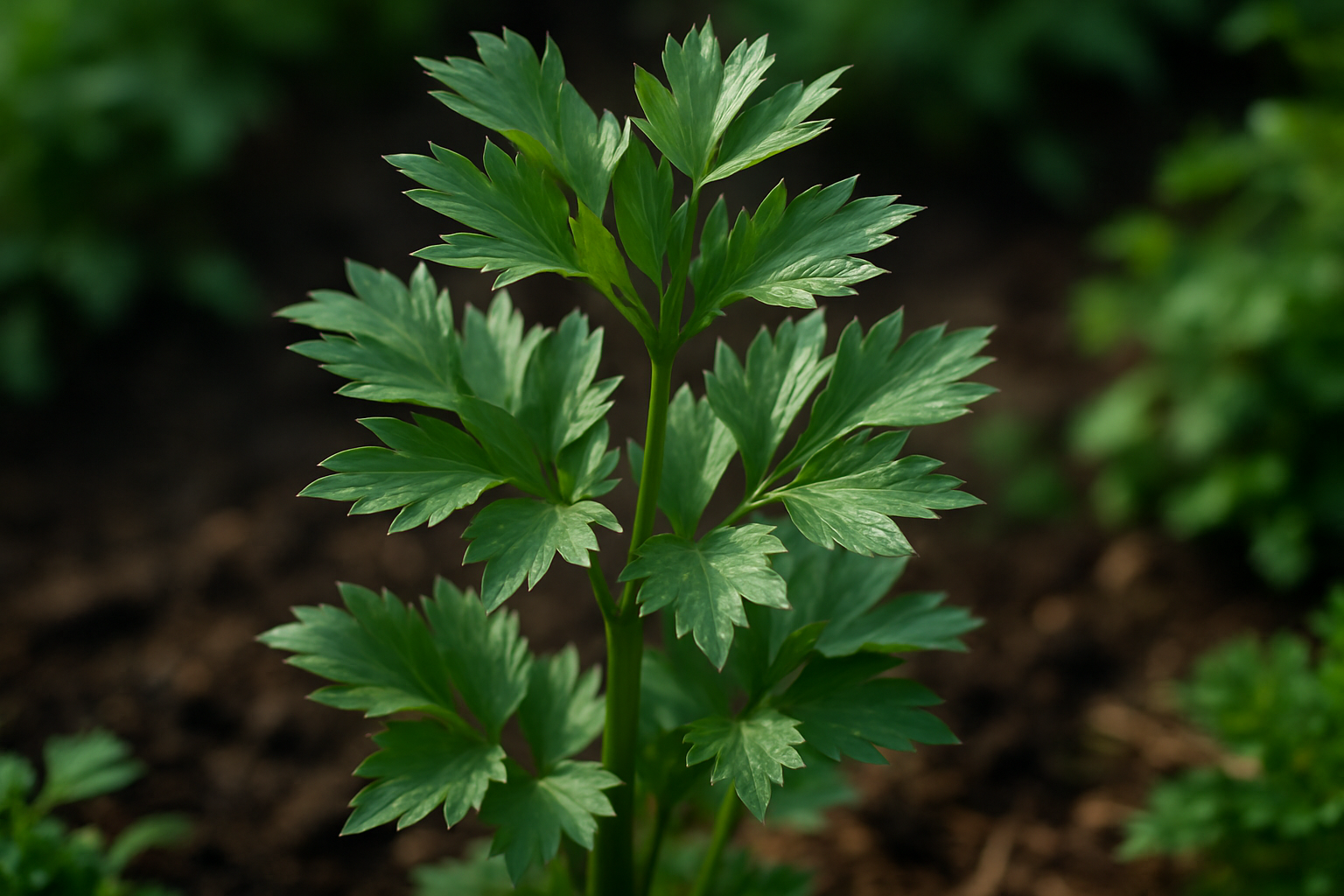What Is Lovage?

Lovage, botanically known as Levisticum officinale, is a hardy perennial herb native to southern Europe but now grown in gardens worldwide. With a history dating back to ancient Greek and Roman times, lovage was valued both in the kitchen and the apothecary. Cooks used its leaves, stems, and seeds to add a celery-like punch to broths and stews, while healers prized it for soothing digestive issues and relieving sore throats.
What sets lovage apart from other herbs is its impressive size—fully grown plants can reach up to six feet tall, featuring deeply divided, glossy green leaves that resemble large celery tops. Both its crisp stems and vibrant foliage offer a flavor profile combining celery, parsley, and a hint of anise, delivering a bold, aromatic note that can elevate soups, salads, and homemade stocks.
Lovage’s robust presence in the garden and kitchen means you don’t need much to make an impact—a few sprigs can transform a dish, and its strong aroma makes it easy to identify among other leafy herbs. For gardeners and cooks seeking something unique, lovage provides both practical and flavorful rewards.
What Does Lovage Taste Like?
Lovage has a flavor that’s both familiar and intriguingly unique, making it a hidden gem for adventurous cooks. Its taste is often compared to fresh celery, but while celery is mild and slightly peppery, lovage is brighter and more intense.
Imagine a sharper, herbal version of celery mixed with the earthy green notes of parsley and just a hint of sweet, almost licorice-like undertones—similar to anise, but mellow. What really sets lovage apart is its aromatic punch; even a few leaves can infuse soups, salads, or stocks with a bold fragrance that lingers.
If you’re using lovage for the first time, start small—its flavor can easily take over a dish. Both the leaves and stems are edible, but they have different strengths:
- The leaves are perfect for chopping into salads or garnishing stews, offering a vivid, celery-parsley freshness.
- The stems are crunchier and more robust, making them ideal for flavoring broths or even as a creative substitute for celery sticks in dips.
The uniqueness of lovage lies in this aromatic complexity—each bite delivers an herbal intensity that transforms simple dishes into something memorable.
Culinary and Practical Uses for Lovage
Lovage is an underrated herb that adds a bold, celery-like punch to dishes, making it a versatile addition to many kitchens. Traditionally, its leaves are chopped fresh and stirred into soups, stews, and broths to deliver a bright, parsley-meets-celery flavor that wakes up your palate.
Try tossing the leaves into potato or chicken salads, or blend them into homemade herb butters for spreading on bread or melting over roasted vegetables. The hollow, crisp stems can be sliced into salads or used as edible straws for Bloody Marys—adding both flair and flavor. They can also be finely diced and sautéed with onions as the flavor base for stocks and sauces.
Lovage seeds, with their zesty, slightly peppery notes, can be crushed and sprinkled over salads, baked into savory breads, or used to infuse oils and vinegars for salad dressings with a twist.
Beyond the kitchen, lovage has a long folk tradition as a digestive aid and diuretic, often added to teas or tinctures to soothe upset stomachs. However, always consult a professional before using it medicinally.
Because lovage is intensely aromatic, it’s important to use it sparingly at first—a little goes a long way, and too much can overpower other flavors. Start with a few chopped leaves or a pinch of seeds, and taste as you go. Properly used, lovage lends freshness and unexpected complexity to classic and new dishes alike.
Fresh vs. Dried Lovage
When it comes to flavor and aroma, fresh lovage delivers a much bolder punch than its dried counterpart. The celery-like, slightly anise flavor of fresh lovage leaves can brighten up soups, salads, and sauces, making it a great choice for dishes where you want a noticeable herbal kick—think fresh potato salad, green sauces, or as a garnish for roasted veggies.
On the other hand, dried lovage loses some of its aromatic intensity but offers convenience and a milder profile, making it ideal for slow-cooked stews, broths, and breads where you want a subtle background note rather than a dominant flavor. For best results, use fresh lovage in recipes that are served chilled or with minimal cooking, while dried lovage works well for dishes that simmer for longer periods.
If you have a lovage patch in your garden, drying your own is easy: simply tie small bundles of washed lovage stems together and hang them upside down in a dark, well-ventilated space until the leaves are crispy—usually about a week. Once dry, crumble the leaves and store them in an airtight container away from sunlight and moisture to lock in flavor for months. Properly dried and stored, lovage can extend its usefulness well past the growing season.
How to Grow Lovage at Home

Growing lovage at home is surprisingly easy, making it a great addition to any herb garden. Lovage thrives in rich, well-drained soil with plenty of organic matter. Choose a spot that gets at least six hours of sunlight daily, though it will tolerate partial shade, especially in warmer climates.
Water it regularly but avoid waterlogged soil, as lovage dislikes standing moisture. This hardy perennial prefers cooler weather but can adapt to a range of climates, making it suitable for most temperate regions.
Planting Lovage
You can start lovage from seeds sown indoors 6-8 weeks before the last frost or directly in the garden once the soil is workable. If using transplants, space them about 24 inches apart to accommodate their mature size. Lovage also grows well in large containers—just make sure the pot is deep enough to support its long roots.
Care Tips
- Regularly pinch back young shoots to encourage bushier growth and prevent legginess.
- Harvest leaves in the morning, before the sun is high, for the best flavor.
- Lovage can be cut all season, but the young, tender stems and leaves are the most flavorful.
Pest and Disease Management
Watch for common pests like aphids or powdery mildew. A gentle spray of soapy water usually keeps aphids in check, while good airflow and avoiding overhead watering help prevent mildew.
Additional Tips
Mulching around the base helps retain moisture and suppress weeds, ensuring your lovage stays healthy and productive year-round.
Substitutes for Lovage and Where to Buy It
If you can’t find lovage, don’t worry—there are handy substitutes that work well in most recipes. Celery leaves offer a similar bright and savory note, perfect for soups, stews, and salads that call for lovage’s fresh, slightly peppery flavor.
Flat-leaf parsley is another solid standby, especially in potato dishes, stocks, and stuffing. While it lacks the same depth, parsley still brings a clean, herbal taste to your meal. Dill and celery stalks can also stand in, particularly in fish recipes or broths where you want a mild anise or herbal touch.
If you want to grow your own, lovage seeds and young plants are available at many local garden centers, especially in springtime. Online retailers and specialty herb stores are reliable sources year-round—look for reputable suppliers like Baker Creek Heirloom Seeds or Richters Herbs.
Keep in mind that fresh lovage is usually seasonal, peaking in late spring and summer, but dried leaves are sometimes available in gourmet shops and online. Plan ahead if you need it for a specific dish, as supply can vary.
